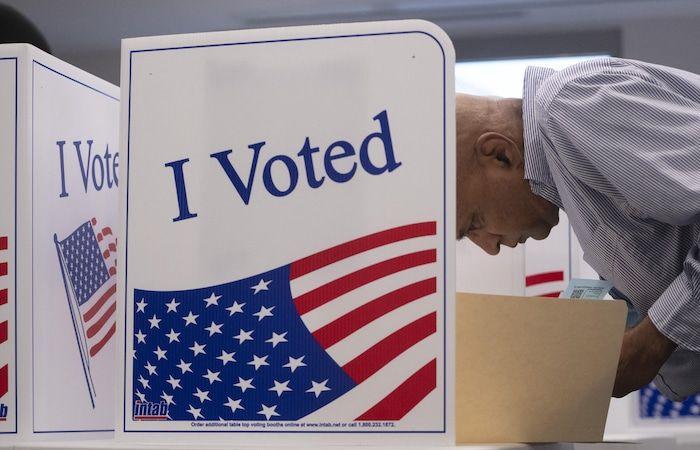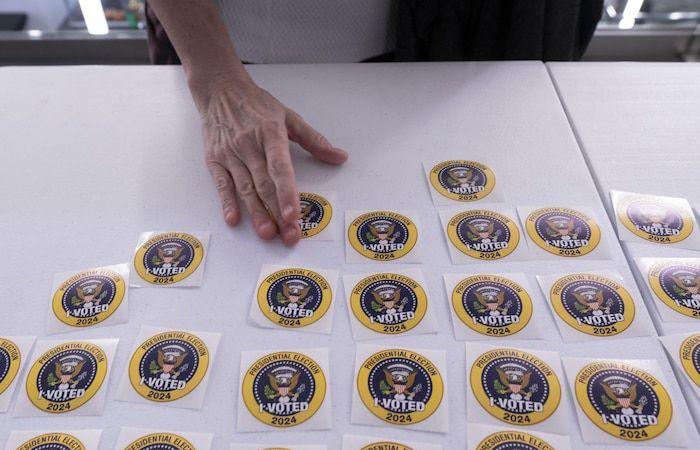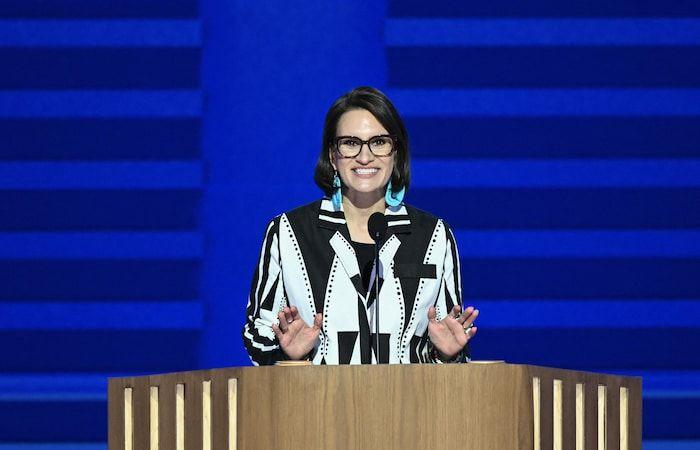According to the United States Census Bureau, there are at least 5 million indigenous voters, particularly in some swing states. Although often marginalized in political debates, First Nations could play a decisive role in Arizona, North Carolina, Michigan and Wisconsin.
This is the opinion of Jordan James Harvilldirector atAdvance Native Political Leadershipan organization that aims to foster political power in Indigenous communities. He believes that states in which margins of victory can be counted in the thousands of votes highlight the true electoral weight of First Nations.
Indigenous people have the opportunity to swing the presidential elections this year, particularly in regions where the Indigenous population is larger than the voting gap
he says in an interview.
Member of the First Nations Choctaw et CherokeeJorder of James Harvill indicates that in 2020, Joe Biden won the state of Arizona by just over 10,000 votes over his rival, becoming the first Democrat to win the state since 1996.
We then observed a significant increase in turnout in a number of counties on the Navajo reservation, which added approximately 40,000 new indigenous voters to the electoral rolls of Arizona. We can therefore say that Arizona is one of the states that led Biden to victory in his first term.
Open in full screen mode
The First Nations demographic could prove decisive in Arizona, North Carolina, Montana and Wisconsin.
Photo : Getty Images / –
Narrow margins of victory
And this example is just one among others, assures the director, specifying that the First Nations can have a real impact in the States where the outcome of the campaign still remains uncertain, in particular in what it call him mur tribal
: Arizona, Nevada, North Carolina, Wisconsin and Michigan, states where the proportion of indigenous voters is relatively high.
Consider North Carolina, where Native people make up about 3% of the population. This time, it is the Republican candidate who could win thanks to the vote of the Lumbees, the largest indigenous community east of the Mississippi
he said.
For decades, the Lumbees (55,000 members) have traditionally voted in majority for the Democrats, but in 2016 and 2020, seduced by the conservative speech of Donald Trump, the rural indigenous community chose the Republican candidate. The polls are extremely close today in North Carolina and if Kamala Harris wants to win the election, she will have to win back their ballots
note M. Harvill.
Indigenous communities in the United States are far from being a homogeneous bloc. There are 574 First Nations recognized by the federal government. Each of them has its own culture and its own history which can influence its political choices.
Open in full screen mode
In-person early voting for the 2024 US presidential election has begun in several US states.
Photo : AFP
It’s time to court the First Nations
Across the United States, Indigenous people generally vote for the Democratic Party, but the political party should not consider them a foregone conclusion, warns OJ Seeds of the First Nation Rosebud Sioux (Sicangu Oyate), South Dakota.
I believe that this would be a serious strategic error for them, because for these elections, every vote will count, particularly in Michigan and Wisconsin, two crucial states that the Democrats and Republicans are fighting over and for which we have seen in recent years increasing electoral participation of indigenous communities.
OJ Seeds is the co-director of Four Directions Votean Indigenous organization dedicated to promoting equality at the ballot box within First Nations territories. He points out that Michigan is home to nearly 242,000 Indigenous people, based on 2020 census data.
Democrats responded by launching a platform in October intended to encourage indigenous voting. The initiative comes a little late in the race, because we are in the final stretch of the campaign, but it demonstrates that the party no longer takes any vote for granted
he said.
He also reminds us that elections are not just about choosing the next president of the United States. American voters are called upon, at the local level, to renew part of Congress by voting for senators and representatives. And then, out of the 50 American states, 11 states and 2 territories organize a vote on November 5 to choose their governor.
Control of the Senate and House of Representatives is at stake here. In a campaign where turnout can make or break an election, courting Native voters who live in some of the most contested states this year can dictate victory.
For example, in Montana, a Republican stronghold for the presidential race, the outgoing Democratic senator John Tester is trying to run for a second term thanks to the indigenous vote which had already got him elected in 2018, reports OJ Seeds.
Nearly 7.7% of the state’s population is indigenous. It is no coincidence that, on the day of his victory, Mr. Tester personally thanked the members of the First Nations in his speech
he said, adding that another state, Minnesota, could soon elect Peggy Flanagan of the Ojibwe community White Earthwhich would make her the first indigenous female governor in United States history.
Every presidential election, Indigenous people face a series of dilemmas: are polling stations accessible? Are the candidates hostile to Indigenous interests? Is voting in American elections compatible with indigenous cultural value systems?

Open in full screen mode
Peggy Flanagan spoke at the recent Democratic National Convention (DNC) at the United Center in Chicago.
Photo : AFP / Mandel Ngan
Most Native Americans live in urban communities nationwide, notes Cheyenne Bradyof the Sac and Fox Nation and associate director of indigenous youth programs at the Aspen Institute, an influential think tank based in Washington.
In Wisconsin, the majority of them are in Milwaukee. They are to be expected to vote in large numbers, as they are not hampered by underinvestment in voting infrastructure in communities.
She points out that, in Wisconsin, the 2020 presidential election was won by a narrow margin of nearly 21,000 votes. The state has 11 federally recognized First Nations and is populated by approximately 147,000 Indigenous people.
Turnout among native voters, such as in Nevada and Arizona, has only increased with each election. There are about 91,000 eligible Native voters in Wisconsin, a voting bloc that could swing the entire state.
According to figures provided by the University of Florida, more than 10 million Americans have already voted, including more than 3 million in the seven swing states, the states which should decide the election.
Because First Nations are mobilizing more today than in previous elections, Indigenous people are helping to elect the candidates of their choice, including members of their own communities, says Samantha Blenckelawyer at Native American Rights Fundan association defending the rights of indigenous communities in the United States.
In 2020, more than 85 Indigenous candidates won in 22 states for House Representatives, Senators or Governors. First Nations are interested in candidates who meet their specific needs, but also in those who share their experiences.
As such, some Indigenous First Nations have gone so far as to take legal action to force states to make it easier for Indigenous voters to vote. This is the case in Nevada, which made it possible to pass laws requiring that all voting services available to citizens also be available on tribal lands.
So many local advances which can have notable repercussions on who will be the next tenant of the White House.








